What’s Really “Green” in the Confusing World of Beef Marketing Claims?


By Jonathan L. Gelbard, Ph.D.
In my previous post, I described general categories of greenwash common in beef marketing. Here, I dig deeper to (a) illustrate limitations of green claims that are common in the sector, and (b) raise awareness among beef marketers of how to communicate environmental claims in an accurate, transparent, and verifiable manner.
I want to emphasize that I don’t see most greenwash in the beef sector as deliberate. Rather, it seems that many beef marketers simply lack:
- Scientific expertise needed to accurately communicate about whether and how beef is produced in a manner that verifiably minimizes key supply chain hot spots, and
- Green marketing expertise in how to substantiate green claims.
In addition, they are not taking advantage of the best tool to avoid greenwash: Comprehensive sustainability standards and independent, third-party auditing and certification.
Here’s a few of the most common examples that I’ve encountered, and limitations of each claim:
Produced on “Sustainable” or “Regenerative” Ranches/Farms: What are examples of measurable, verifiable attributes that justify the “sustainable” or “regenerative” claim? What certification(s) or other forms of evidence verify the claim?
Regenerative, a new claim associated with hot trends in food, has no consensus definition in the beef marketplace. An increasing number of producers claim to use regenerative practices. However, there is no consistency regarding what it means, or evidence to support the claim. According to some proponents, simple “pasturing of animals raised for meat is considered to be a regenerative system of production.” However, narrow “grass-fed” and “pasture-raised” claims fail to verify whether grazing is well-managed. Regenerative capitalism advocates offer a definition of being more in tune with Nature than “sustainable.” However, there are not yet standards that codify what regenerative grazing means in terms of verifiable on-the-ground results. The beef marketplace needs such standards to help buyers recognize credibly regenerative ranchers.
Grass-fed, pasture-raised, free-range: Terms like “grass-fed” and “pasture-raised” refer to whether the beef comes from cows that were “finished” (i.e., spent the last few months of their lives) grazing grass (and other plants) on ranches rather than eating grains in feedlots. It’s important to remember that all beef cattle spend the first half to two-thirds of their lives grazing (see this infographic of the beef product lifecycle).
- An important question to ask is “certified grass-fed/pasture-raised by whom?”. Too many brands don’t specify. In some cases, these labels mean what you picture. In other cases, claims are misleading because they allow producers to feed animals manufactured grass pellets and cereal grain crops (like corn) in the pre-grain state. Is that what you picture when you buy beef labeled “grass-fed” or “pasture-raised?”
- Even worse, the “Pasture-Crafted” beef marketed by Cargill is “grass fed grain finished, guaranteed tender and traceable to birth on sustainably operated ranches.” Since “grass-fed, grain-finished” also describes conventional beef, and there is little transparency regarding how Cargill defines and verifies its “sustainably operated” claim, I worry that this product is just “beef: with adjectives”.
- The scope of benefits provided by grass-fed and pasture-raised beef is largely limited to “feedlot free.” These attributes help buyers avoid contributing to the alarming environmental, public health, animal welfare, and community impacts of industrial livestock production. Yet they fail to answer critical questions about whether the grazing operation was well-managed, such as:
- Are grasses and soils healthy or is the ranch overgrazed?
- Are streams clean, or are cows defecating in the water, harming fish and wildlife and posing health risks to families swimming downstream?
- Does the ranch manage with nature by coexisting with wildlife, or are managers shooting and/or poisoning predators and iconic species such as wolves and bison?
- Are healthy plants and soils sequestering heat-trapping carbon dioxide (CO2) deep into the soil, or are degraded, eroding soils losing carbon as CO2 emissions?
The answers to these and other questions are important not only from an environmental standpoint. There’s also a powerful business case for well-managed ranching. This is one reason why grass-finished beef from verifiably well-managed ranches is my gold standard. It’s just frustratingly hard to find what I’m looking for unless I’ve visited the ranch and confirmed it’s well-managed. The certification that would comprehensively address my concerns is not yet commercially available (the Grasslands Alliance piloted their standard on multiple working ranches and posted it for public comment).
Local, Farm to Table, From a Local Family Farm: I love local food and family farms, but distance and farm size alone tell us nothing about whether beef was produced on well-managed vs. poorly-managed operations.
Humanely-Raised, High Animal Welfare: For most working to advance beef sustainability, it is critical to treat animals humanely so that they have wonderful lives and “only one bad day”. Yet like “grass-fed”, animal welfare claims (for example Whole Foods’ 5-Step Ratings) tell us about only a narrow subset of management practices. They don’t address most other impacts of poorly-managed operations, such as those to soil health, water quality, land and wildlife conservation, climate-disrupting pollution, and treatment of farm workers.
Natural: This claim means nothing in terms of real, measurable benefits. What are specific attributes that justify the claim? What evidence verifies it? In some cases, “Natural” means “Hormone free” and/or “Raised without antibiotics”. Buyer beware – read the label carefully.
“From a holistically managed ranch” or “We use rotational g razing”: Holistic management is a decision-making framework that producers can use to adaptively manage their operation. Many “regenerative” ranchers practice some form of Holistic Management (as defined by Allan Savory of the Savory Institute) without accepting all of Savory’s scientifically dubious grand claims. These claims have inflamed conservationists for decades (e.g., see this response by eminent scientists to Savory’s 2013 TED talk). It will take a separate post to cover the intricacies of both this controversial topic and the related scientific debate about whether and under what conditions rotational grazing can generate triple bottom line benefits (See, e.g., Part I, Part II, Part IV of “The Rotational Grazing Debate”; and recent pieces here, here, and this journal issue). It’s an important scientific storyline to follow given its implications for accurate, transparent beef marketing.
Whatever management approach ranchers find to best suit their situation, I just want to see scientifically-sound (and ideally independent, third-party) proof that it generates the claimed benefits. You can hear my nuanced insights regarding environmental and social benefits of Holistic Management starting at 32:20 of this podcast.
Climate crisis-related claims (e.g., “Our grazing practices sequester carbon”): Depending on a ranch’s climate, soils, and land use history, well-managed grazing can sequester at least some carbon into soils AND improve resilience to drought. Carbon-related claims should be accurately communicated, with supporting evidence.
Beware grand claims about well-managed grazing being a “silver bullet” capable of reversing global warming. In a 2014 article exploring many benefits of soil carbon, esteemed scientist, H.H. Janzen, concluded that carbon sequestration has the potential to remove only about 5% of current fossil carbon emissions from the air. Echoing findings from multiple other studies, he stated that, “global soil carbon sequestration can, in theory, contribute significantly to CO2 mitigation, but the benefit may never be prominent and is better seen as one among many incremental ‘wedges’ in a portfolio of multiple mitigation practices enacted together (Pacala and Socolow 2004; Del Grosso and Cavigelli 2012).”
In other words, current scientific consensus is to view management practices that sequester carbon as an important “slice of the emissions reduction pie”, but not “the whole pie”.
Another climate crisis-related claim that beef marketers like to make is that because U.S. beef is responsible for only a small percent of America’s heat-trapping emissions, it is “sustainable”. Does the fact that beef production is responsible for a low percentage of U.S. emissions also mean that it generates a sufficiently low amount of emissions to qualify as “sustainable”? Or is the percentage simply low in relation to the high emissions of the U.S. energy and transportation sectors?
It turns out that the way most beef is produced in America still generates an exceptionally high amount of climate-disrupting emissions in relation to most other kinds of food. According to the EPA Greenhouse Gas Inventory, beef’s emissions from cattle burping and manure alone (about 128 MMT CO2 eq/yr-1, which does not include feed crop production) are greater than those of many countries. Clearly, this “sustainable” claim qualifies as greenwash.
While legitimate debate continues over many of these issues, there is growing consensus on what constitutes “sustainable” beef in the marketplace. In the next post in this series, I’ll introduce a science-based framework for understanding your beef-related green purchasing choices.
Jonathan L. Gelbard, Ph.D. is Principal and Senior Conservation Scientist at Conservation Value Solutions. As a researcher, writer, speaker, and advisor, he digs deep to identify root causes of problems, and catalyzes transformative solutions. Dr. Gelbard was Senior Scientist at the Grasslands Alliance, a partnership between NGO’s, certifiers and ranchers that developed and piloted a comprehensive certification standard for U.S. and Canadian beef cattle and bison grazing operations. The Grasslands Alliance is currently fundraising to support its development of certification and continuous improvement programs. Click here to learn more.
Fish Pain: Latest Animal Welfare Cause
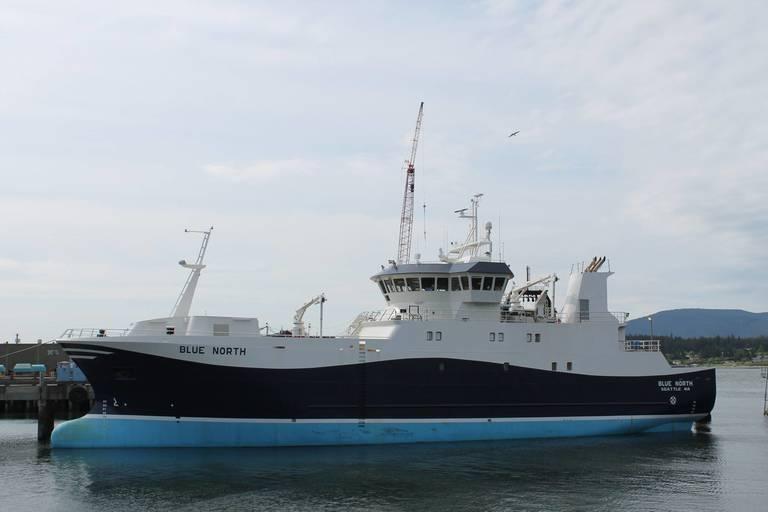

The animal welfare movement has made impressive gains in recent years, as more food companies have ensured the egg, pork, beef and poultry supply chains are less violent and more ethical. The push for cage-free eggs recently won over Nestlé; some turkeys are actually now traceable; and more poultry producers such as Tyson Foods say they are harnessing technology to improve the condition of animals.
But for the most part, this growing sense of awareness about how we treat the animals we eat has overlooked fish. According to writer Ferris Jabr in the Canadian science and environmental publication Hakai Magazine, some of this disconnect can be explained by psychology: our interactions with fish are limited to brightly-colored little creatures swimming around aquariums or a plated fillet of salmon. It has been billions of years since we evolved from our scaled friends; monkeys and apes are easier for us to relate to since that evolution, in contrast, was only a few million years ago.
Meanwhile, estimates suggest that 10 to 100 billion farmed fish are slaughtered annually, joined by anywhere from 1 to 3 trillion fish that are wild-caught (one United Kingdom NGO caps that number at 2.7 trillion). Even at the estimates, the amount of fish killed annually is far more than the total number of people who have ever lived on the planet.
Now, more nonprofits, such as PETA and Mercy for Animals, are urging that this line of thinking applies to fish, especially as aquaculture becomes more critical to the global seafood supply. But despite the mounting scientific evidence, most consumers still share a common misconception that fish do not feel pain. The Animal Welfare Institute counters:
“Slaughter methods in the aquaculture industry are appalling. Little to no attention is given to the suffering of the animals and most are fully conscious during slaughter, which can take many minutes. Some species, such as salmon in the United States, are also starved for many days to empty the gut before they are sent to slaughter. Fish are most often not stunned and are killed by bleeding out, being hit on the head repeatedly, suffocating or freezing.”
Yet most countries, including the U.S., have no regulations requiring that fish are humanely treated.
One company striving to make the fishing industry a more humane and ethical one is Seattle-based Blue North, which operates several fishing vessels in the northern Pacific Ocean. Taking inspiration from renowned animal science professor Temple Grandin, one of Blue North’s boats has been designed to reduce the stress and panic fish experience as they are caught. On this new vessel, fish are quickly stunned by electricity before they are bled. In an interview with Jabr, the founders of Blue North also noted that the crew working on this boat now have a safer and more secure environment in which to do their jobs.
As Jabr explains, the development of more humane slaughtering methods, on sea and on land, has not been prompted by morals or ethics. Rather, it is about profit, and to nudge consumers to feel better about the products they purchase. Nevertheless, watch for more steps like this to be taken to eliminate the pain and suffering of fish, while more consumers are educated about how and when these creatures feel pain. And in fairness to the people who work in these industries, more ethical methods of killing fish will help their jobs across the entire seafood supply chain become safer as well.
Image credit: Blue North/Facebook
AT&T Layoffs Stir Union Action, Putting More Heat on President Trump
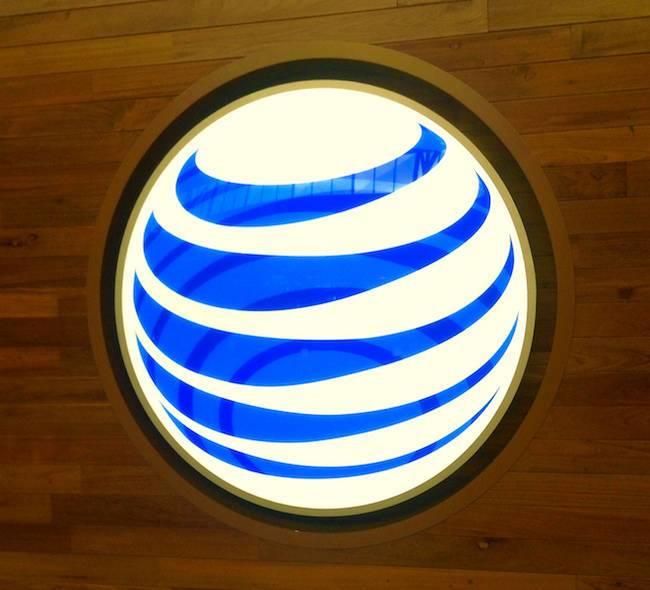

AT&T got into hot water last week after news surfaced that it was cutting hundreds of jobs. It now faces a union lawsuit over the layoffs. The double whammy has overshadowed the good publicity garnered by the company in December, when it announced a pledge of $1 billion in new capital investment along with $1,000 bonuses for 200,000 employees.
AT&T made that announcement in support of the controversial new tax law championed by President Trump. Unfortunately most of the good will has faded. In addition, the negative press has motivated industry observers to ask new questions about AT&T's support for another controversial Trump position: the rollback of net neutrality rules.
The wave of bad press is quite a change of pace for the company's public profile. Just last year, Fortune magazine named AT&T the "Most Admired Telecommunications Company in the World" for the third year in a row. Forbes also placed the company in its "Top 50 Most Admired" list for the fourth time.
AT&T has been in the middle of a high stakes takeover bid for Time Warner, so it's not surprising that the company has gone out of its way to get in good graces with the Trump administration.
However, by hitching its star to President Trump, AT&T has exposed itself to unanticipated areas of damage. One key incident occurred last summer, when Trump spoke at the annual Boy Scouts of American Jamboree and turned the non-partisan event into a giant campaign rally.
Trump's speech set of a torrent of outrage in and outside the Scout community. AT&T came in for its share of blowback because the company's Chairman and CEO, Randall Stephenson, is also President of BSA.
On his election to that position back in 2016, Stephenson described BSA values:
“The values Scouts learn as young men — integrity, selflessness and self-reliance — are fundamental to a strong, healthy society...
BSA Chief Executive Mike Surbuagh also added this:
“Moving forward in our mission to serve America’s youth by teaching them leadership and developing their character, Mr. Stephenson is a shining example. As the leader of one of the world’s most innovative communications companies, Mr. Stephenson will help us fuel our effort to bring fresh, relevant and high impact experiences to youth and families.”
Despite the clear contrast between BSA values and Trump's behavior, BSA didn't make an official comment on Trump's Jamboree speech (for the record, according to BSA the invitation to speak at the Jamboree is a traditional offer made to every president).
Stephenson's connection with the Boy Scouts, which could have been a clear win for AT&T's corporate profile, brought the company into dangerous political waters.
When a media molehill becomes a mountain
Mass layoffs are a feature of American business, not a bug. They happen all the time. Like the weather, they are usually newsworthy to some degree or another. However, it takes an extra jolt -- a hurricane, for example -- to make people sit up and pay attention.
In the case of AT&T, that jolt was provided by the company's lavish praise for the new Trump tax law. The imbalance between the mass layoffs and the bonus offering added fuel to the fire. A one-time bonus of $1,000 sounds generous. A permanent wage and benefit hike would have a far greater outcome on household finances.
Last year's recognition from Fortune adds another layer of irony to the situation.
In an announcement listing AT&T's place on the Fortune list, Stephenson noted that the top honors were a "tribute to the hard work and customer commitment of each and every employee in the AT&T family.”
That sentiment is a little difficult to square with the recent job cuts at AT&T. The Dallas Morning News sums it up:
The layoffs have become a sore point as AT&T touted how it will benefit from GOP tax law, which lowers the corporate tax rate from 35 percent to 21 percent.
AT&T announced at least one round of layoffs internally just before Christmas last year. The reported total was 713 positions in Texas, Missouri, Arkansas and Oklahoma.
The hurt could go much deeper. Last week Indystar.com cited Larry Robbins, vice president of Communications Workers of America Local 4900, who claimed that 4,000 or more layoff notices went out to AT&T workers around the country.
The long term prospects look even worse for workers at the company. AT&T executives are on record anticipating that its workforce could eventually go down by one-third, partly due to efficiency measures related to cloud computing and digitization.
Right back at you: AT&T layoffs taint Trump brand
The union lawsuit is all but certain to keep the negative media trained on AT&T. By association, Trump gets a hefty share of that spotlight.
The president's frequent promises to boost employment in the U.S. coal industry have already fallen flat. Coal power plants continued to shut down during President Trump's first year in office; a major coal company announced bankruptcy proceedings, and a recently announced coal mine closure in Pennsylvania is just one more piece more bad news coming down the pike in 2018.
Trump also promised to bring back manufacturing jobs, but that hasn't stopped companies from carrying out closures and cutting jobs.
The union action against AT&T has also reflects badly on Trump's promises to wage earners. Last week, Communications Workers of America District 6 filed a lawsuit against the company and also filed a complaint with the National Labor Relations Board, charging that AT&T is violating an agreement by subbing in contract employees for laid off workers.
CWA makes a direct link between the AT&T layoffs and the company's support for the new tax plan:
AT&T CEO Randall Stephenson has been one of the strongest supporters of the recently-passed tax plan, promising to use the massive corporate tax cuts for investments that would create thousands of middle class jobs. By pushing forward with layoffs while continuing to subcontract work and send jobs overseas, AT&T is breaking its promise to American workers.
The union is planning protest actions. If that materializes, the heat will increase on AT&T, and on Trump.
Meanwhile, the AT&T layoffs have drawn renewed attention to the company's support for rolling back net neutrality rules.
With support from the Trump Administration, the Federal Communications Commission plans to roll back 2015 net neutrality rules designed to close numerous loopholes in a previous rulemaking from 2010.
ArsTechnica.com is among those pointing out that AT&T has explained the layoffs as driven by technological evolution, not net neutrality or other government regulation.
In signs of more stormy weather ahead for both Trump and AT&T, Google and other heavy hitters in the U.S. tech sector are lining up to sue the FCC if and when its net neutrality rollback becomes official, and Bloomberg reports that AT&T abruptly canceled its keynote position at Citigroup Inc.’s 2018 Global TMT West Conference.
AT&T's head of phone and pay-TV operations, John Donovan, was set for a kickoff slot on January 8, but according to Bloomberg the engagement was nixed on December 27, just days after Newsweek reported on the layoffs.
Photo (cropped): Mike Mozart/flickr.
New Supply Chain Map Targets Chinese Suppliers of Big Apparel


How can consumers determine the real sustainability successes of their favorite brands? That's the perennial question for many Western shoppers these days, who often want to know whether the items and the brands they support are really as environmentally and socially benign as companies say.
A variety of industry-specific scoring systems have emerged in recent years to aid in that effort. Greenpeace's recent evaluation of electronics manufacturers, the Sustainability Consortium's many reports on specific industries and the Sustainable Apparel Coalition's Higg Index all provide a means for evaluating companies and supply chains within their respective markets.
Now in its fourth year, the Corporate Information Transparency Index (CITI) has amassed a list of 267 brands and 3,292 suppliers. Its list, developed jointly by the Institute of Public and Environmental Affairs (IPE) and the Natural Resources Defense Council (NRDC),rates brands that have manufacturing centers in China according to their sustainable practices. The group conducted more than 1,400 audits with real-time assessments of companies' green manufacturing processes, publishing the track record of those that have worked hard to ensure their suppliers are just as environmentally conscientious as they are.
The importance of IPE's approach of course is that it harnesses supply chain data for some of the biggest global manufacturers there are. And like other rating systems, the CITI doesn't just look at the inner-workings and testimonies of the brand's factories, but evaluates the corporations' environmental impact where it really shows: in the supply chain.
This year the IPE and NRDC took another step toward improving the environmental track record of the world's largest manufacturers. Their Green Supply Chain Map, now on IPE's website, is a visual, real-time mapping of companies that are willing to support supply chain transparency.
The map is based on publicly available information from China's government databases and manufacturers' disclosures. So far, six companies have agreed to be featured on the map: Gap, Puma, Espirit, New Balance, Inditex and Target.
The voluntary disclosures are critical to IPE's ability to provide a credible evaluation of suppliers, some of which have had environmental violations in the past. But it does something else, as well: It enlists the cooperation, through membership, of companies that are willing to shine a light on their operations and demonstrate that they are actively making an effort to green their supply chain.
The mapping tool is still in its infancy stages, with some data only in Chinese and other sections lacking clarity in English. But it offers a insights that up to now, required consumers and companies to search across industry-specific websites, call manufacturers and other sources for information.
The IPE is the brainchild of renowned Chinese environmentalist Ma Jun, whose considerable research has helped shine a light on the breadth and kinds of environmental pollution that China is wrestling with. Ma's investigative journalism for the South China Morning Post and his landmark book, China's Water Crisis (1999) helped bring the country's troubling environmental problems into public view. His work has also forced multinational corporations with manufacturing ties in China to step up their sustainability efforts.
The supply chain map is IPE and NRDC's broadest effort to elicit the participation of manufacturers and suppliers to upgrade their environmental records, by keeping consumers updated as well.
The map has one other less-touted benefit: It provides a visual representation of all of the physical features that are affected by pollution in China. That includes not just rivers that have been exposed to industry discharge, but cities as well. According to these maps, China has a long way to go to improve its environmental health record. The IPE Green Supply Chain Map offers a compelling incentive for consumers and companies to actively support that goal.
Image credit: High Contrast | WikiMedia Commons
Why Recycling Could Increase, Not Decrease, After China Ban

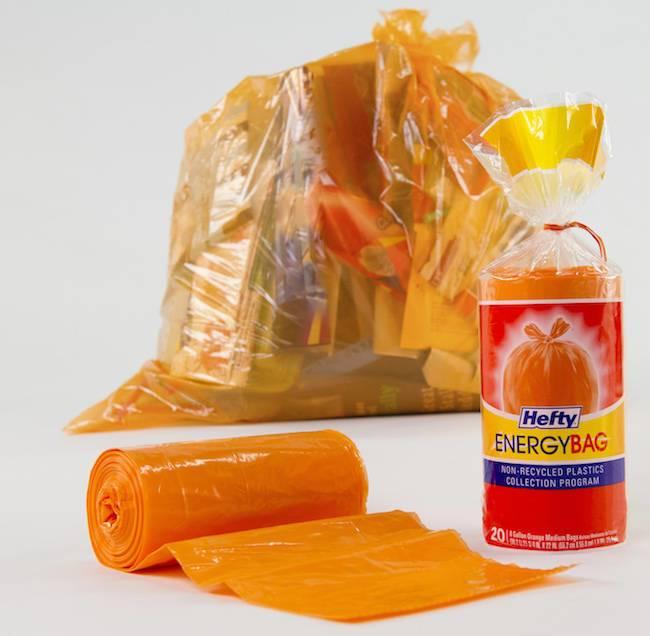
Last fall the Peoples' Republic of China sent the U.S. recycling marketplace on its ear, by announcing a phased-in ban on scrap imports. The new policy is part of China's strategy to reduce industrial pollution within its borders. Unfortunately, U.S. recyclers have relied heavily on China to take their mixed materials. With that door closed, recycling programs in cities across the U.S. could grind to a halt.
As with many challenges, though, the recycling ban has created new opportunities. Boise, Idaho, illustrates one resourceful approach that enables its curbside recycling program not only to continue, but to expand.
More, not less, plastic recycling
China's new policy is expected to have an especially severe impact on plastics, compared to metals and other more valuable scrap. And, Boise has relied primarily on China to take its scrap, including plastics and other recyclables.
Last week the city announced its solution: a new arrangement with Renewlogy (formerly PK Clean), a Salt Lake City company that has developed proprietary technology to convert plastic into diesel fuel.
Instead of putting a crimp into Boise's curbside recycling program, the new arrangement will expand the kinds of plastic residents can recycle.
Previously the program only covered bottles and other items in plastics in recycling categories 1 and 2. The new program expands to categories 3 through 7, which generally includes plastic films, bags and foams.
City officials also state that at least for now, residents will not see any impact on their recycling or utility bills.
Boise has friends in many places
Aside from the big assist from Renewology, Boise is benefiting from corporate America's interest in sustainability.
Under the new recycling program, residents will continue using the same receptacles for recycling plastics 1 and 2. For plastics 3 through 7, residents will commingle those items in Hefty EnergyBags provided by the city without charge.
EnergyBag launched in 2014 as an initiative of Dow Packaging and Specialty Products. In partnership with the Keep America Beautiful organization, EnergyBag gets consumers to collect hard-to-recycle plastics such as chip bags and candy wrappers. It also enables Dow to put its branding on local recycling programs, while helping the company attain its 2025 sustainability goals.
Dow and Keep America Beautiful introduced a grant program for EnergyBag last summer, and Boise is one of the two inaugural recipients. Cobb County, Georgia is the other.
The two awardees each get $50,000 to establish EnergyBag recycling programs, with additional guidance and support from Dow. The decision to go with plastics-to-diesel is part of the grant program.
Boise officials also credit the company Happy Family Brands with alerting it to the funding opportunity and partnering in the application.
From oil to plastic and back again
This is all well and good, but none it makes any sense without a market for the scrap. That's where Renewology comes in.
The Renewology system basically reverses the process by which oil is converted into plastic.
The end result is that waste plastic is reduced to its former molecular structure in liquid form, as in low sulfur diesel fuel.
The system is inexpensive, transportable and mobile. It got a test run last summer deploying solar power to recover and convert ocean waste as one of several teams organized by Plastic Ocean Project.
Renewology's zero-emission technology has garnered numerous awards and honors. CEO and founder Priyanka Bakaya, a graduate of Stanford and MIT, also counts Forbes 30 Under 30 and Fortune 40 Under 40 Ones to Watch among her recognitions.
The petrochemical whack-a-mole
So far Renewology has a demonstration facility in Salt Lake City, and it is working on a large scale facility in Canada.
The arrangement with Boise could help prove that the system is economical at commercial scale.
If all goes well for Renewology's business plans, its technology will have a significant -- and badly needed -- positive impact on plastics recycling.
The big picture is somewhat more complicated for communities dealing with the impacts of fracking and other oil and gas operations in the U.S. That's because China has long relied on recycling to help meet its residents' high demand for plastic products. Without a high stream of plastic scrap to recycle domestically, the country will need to import more expensive virgin plastic.
ExxonMobil and other fossil stakeholders have already ramped up their investment in U.S. petrochemical and plastics facilities in recent years. In support of that move, Exxon in particular has been gobbling up shale gas assets in the U.S.
In short, a larger market for fresh plastic products in China will help sustain shale gas (and oil) production in the U.S., ensuring that the risks and impacts of those operations continue to haunt local communities and contribute to global greenhouse gas emissions.
Photo: via 3blmedia.com.
Zuckerberg’s 2018 Personal Challenge Should Have Been the Social Network’s Mission All Along
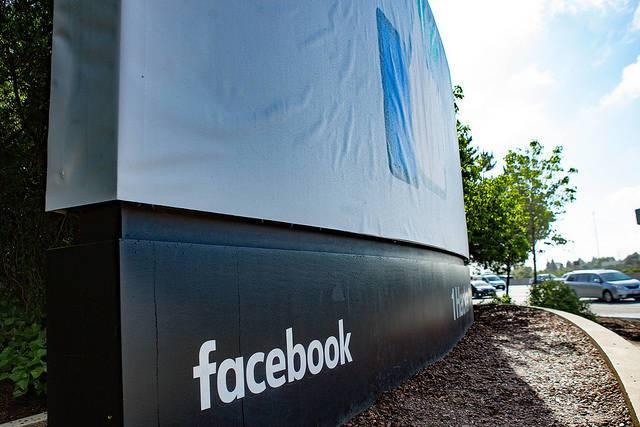

In case you’ve missed them over the years, Facebook co-founder and CEO Mark Zuckerberg has made it a habit of setting a “personal challenge” for each new year. They have ranged from learning Mandarin to eating only meat from animals he had killed himself.
This year, Zuckerberg announced 2018 will be the year he devotes himself to these following issues:
“The world feels anxious and divided, and Facebook has a lot of work to do -- whether it's protecting our community from abuse and hate, defending against interference by nation states, or making sure that time spent on Facebook is time well spent . . . My personal challenge for 2018 is to focus on fixing these important issues.”
Zuckerberg acknowledged that far from decentralizing power, technology platforms (including social media channels) have given citizens a sense that power lies with the platform owners. And little wonder why many people have that perception, considering that Facebook and a small band of Silicon Valley giants are now the largest spenders on lobbying efforts in Washington, D.C.
Looking back on the battering Facebook endured during 2017, this new goal of Zuckerberg’s smacks more of saving his company than “self-improvement.”
It is clear that the social network lost its way, as the Menlo Park-based company struggled with missteps, such as being embroiled in accusations it was part of the Russia-driven “fake news” scandal. Not only has the company seen trust in its brand suffer, but any talk of Zuck (or Facebook’s chief operating officer, Sheryl Sandberg) standing a chance as a presidential contender in 2020 has shut down.
Add the fact that some former Facebook executives and employees are saying they now regret the roles they had in building a company that many now say is tearing people apart, and the company once seen as invincible and indispensable to many is now viewed as arrogant and toxic.
Clearly, Zuckerberg and his company needs to repair the damage to its reputation, which he attributes to “too many errors enforcing our policies and preventing misuse of our tools,” as in the company’s confusing policy monitoring hate speech.
Zuckerberg’s colleagues, of course, cheered him on after last week’s announcement. “Grateful as ever for your leadership and look forward to working with you and our colleagues on these important issues this year,” replied Sandberg to his post.
Other respondents were not so sanguine on Zuckerberg’s drive to “fix our issues together.”
“Here's a thought. Your ‘community’ is destroying relationships, causing severe depression, promoting a 1-sided belief system. You say you're bringing people together, what you're doing is opening a divide in the people in this world.”“To me the question is how could Putin so successfully use Facebook to influence US elections and how to self regulate so Facebook is not ever again a tool to destroy the world and values we treasure.”
“The first 4 words of Facebook's mission statement are ‘Give people the power’, but the full statement is actually "give people the power after they pay us to promote their pages and posts.”
In fairness to Facebook, it is easy to forget the company at first was a master at bringing people who are time zones apart closer together, while generating copious revenues: over $10 billion in net profit last fiscal year, in fact. The problem, however, is while Facebook was preaching “community,” its executives and legal team were working in the shadows to ensure it would be simply left alone as a simple technology platform – not as a complicated media company.
Facebook wanted to profit off of political campaigns and news trends while avoiding any of the responsibilities associated with running political advertisements. Just a few years ago, Facebook was bullish on the prospect that it would be the most important arena in which to fight out U.S. elections, and the evidence suggests the plan came to fruition in 2016. “That was exactly what happened, and it is viewed by many as a disaster,” wrote Ben Smith for Buzzfeed.
Now the company and its CEO are feeling remorseful, but it will take far more than a year of reflection for Facebook to find a way to course-correct. And it will have to rebuild this trust while satisfying its investors with impressive returns. The bottom line is that the company will have a lot of needle-threading to do during 2018. As summed up on Axios, “Facebook wants to use as little editorial judgment as possible in weeding out crap on its platform, to avoid becoming a media company — a business with much smaller margins and greater legal liability.”
Image credit: Anthony Quintano/Flickr
Hugo Boss Accused of Forced Labor in India


When one thinks of forced labor and other human rights violations within the global apparel industry, fast fashion brands and big box retailers usually come to mind, especially in the wake of the 2013 collapse of the Rana Plaza factory in Bangladesh.
But according to a recent report on the Guardian, evidence of worker confinement has been found in the supply chain of luxury fashion retailer Hugo Boss.
One of the company’s suppliers in southern India, Best Corporation, has been accused of several transgressions, including: refusing to allow its female garment workers to leave its factory on their own free will; banning workers from having cell phones or only permitting telephone calls under managers’ supervision; and the denial of independent inspections by local labor and human rights organizations.
Hugo Boss is far from the only high-end retailer accused of lax oversight across its global supply chain. Prada, for example, has been accused of a lack of transparency in discussing how workers are treated across its supplier base. Kering, the France-based luxury brand group that owns brands such as Gucci, has also been dogged by NGOs such as Humanity United for not publicly naming its suppliers. The result, say these companies’ critics, is an opportunity for workplace abuses in factories to occur under the radar many time zones away from where these coveted products are bought and sold – often at hundreds of dollars, pounds or euros per item.
In its most recent sustainability report, Hugo Boss acknowledged that forced labor was a concern within its supplier base. In that report, the company said it knew of no instances of grievances filed related to human rights violations – but Hugo Boss did not report any third-party human rights reviews, either.
The problems Hugo Boss and other fashion companies have confronted in India have long been a drag on the reputation of the country’s garment sector. One NGO, India Committee of the Netherlands, reported a year ago that various forms of human rights abuses at factories, including forced labor and child slavery, were found in over 90 percent of spinning mills across the country’s southern region. The majority of these people were teenage girls and women between the ages of 14 and 18; and anywhere from 10 to 20 percent of them were younger than 14. Of the almost 750 mills surveyed, a standard working week was over 60 hours long. In addition, only 39 of those mills paid the locally mandated minimum wage and only 10 of them had any trade union presence.
While Hugo Boss told the Guardian that it was working to attain “improvements” within its supplier base, as of press time the company has not commented publicly on the matter.
Image credit: Peffry/Wiki Commons
More Trouble in Coal Country: 370 Mining Jobs Lost in One Blow
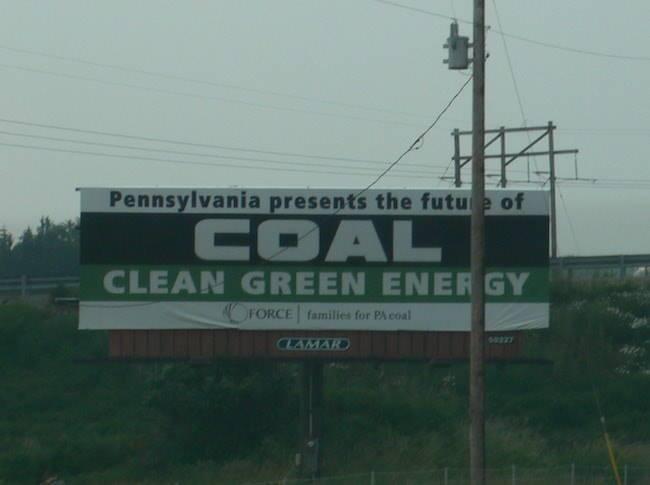

If President Donald Trump is serious about bringing coal back, he has his work cut out for him. The President's first year in office was marked by a slew of coal power plant closings, and his second year is already off to a bad start. Mepco, Inc. announced that it will close a Pennsylvania mine, eliminating 370 coal jobs. The cuts will occur in two waves as the 4 West Mine in Greene County winds down operations this spring. The blow to local workers is painful enough, and the closure also illustrates some hard truths about the state of the U.S. coal industry.
Yes, renewables are now in play
Fossil energy stakeholders and their allies regularly charge that policies favoring renewable energy are driving coal out of its once-dominant position in the U.S. power generation sector, and consequently forcing coal mines to shut down.
That argument ignores a more substantial consensus among industry observers. A change in federal law under the Bush administration enabled the ongoing shale gas boom, which continued to flood the market with low cost natural gas during the Obama administration.
Until recently, renewable energy has played little if any role in coal plant closures. That has changed in the past year or so. Natural gas is still the main force, but wind and solar costs have become more competitive with coal (and natural gas, for that matter) in some markets. More consumers are also willing to pay a premium for clean, renewable energy.
The combination of renewable energy and natural gas is also a one-two punch to coal, according to The American Petroleum Institute. The organization, which represents major gas stakeholders as well as oil producers, has argued that gas beats coal as a more flexible, nimble fit for grids that are introducing more wind and solar.
Bearing out these trends, the latest Energy Infrastructure Update from FERC indicates that by 2020 the combination of wind and solar will add 116,054 megawatts of capacity to the nation's fleet of power plants. Natural gas also continues to make a strong showing at 92,489 megawatts of added capacity. That spells more bad news for coal ahead.
Given all the market forces at work, FERC foresees only 1,927 megawatts of coal added by 2020, spread among just four generating units. The coal industry is also looking at the retirement of 74 units totaling 20,650 megawatts by 2020.
It's also worth noting that the update looks at central power plants, not small scale (less than 1 megawatt) installations, so the figure for wind and solar does not include the growing number of micro wind turbines and small rooftop or ground mounted solar installations.
Coal vs. coal
Long before the advent of renewable energy and low cost gas, mechanization began driving workers out of the coal sector. That trend -- the decoupling of productivity with mine employment -- has continued in recent years. The advent of mountaintop removal in Appalachia, for example, enabled high productivity with relatively low labor costs.
The closure of 4 West Mine provides another example of the impact of mechanization and other operational factors on mining employment.
The mine is operated for Mepco by the company Dana Mining of Pennsylvania. The local news organization Observer-Reporter sums it up in a January 3 article about the mine closure:
Mepco Inc., Dana’s parent company, notified the state of its decision Tuesday and cited as reasons for the closing the age of the mine and poor geological conditions that have resulted in high production costs.
The Observer-Reporter cites Mepco senior vice president of operations Brian Osborne, who explains that "the 4 West Mine simply can’t compete in today’s steam coal market."
The mine is at a disadvantage compared to most in the area. As described by the Observer-Reporter, it is placed in a different seam than most of the others. Among other problems, that has exposed it to "poor geological conditions" resulting in structural issues.
Another major disadvantage is the continuous system used in the mine, which is not as efficient as the longwall method used in others.
Do read the full piece for more details, but the upshot is that another coal mine in the area beat out 4 West for a prize customer, the 700-megawatt Longview Power Plant in nearby Morgantown, West Virginia.
Timing also worked against the mine. It opened in 2005, when economic growth in the U.S. was still coupled to an increase in power production. Its owners may have anticipated a level of demand that failed to materialize, as the financial crash of 2008 slowed the global economy. By the time the U.S. economy found its footing, the shale gas boom revved up.
Energy efficiency improvements also accelerated during the Obama administration, and that has also helped slow demand for new power plants.
What's all this about the Longview Power Plant?
In a somewhat ironic twist, the Longview Power Plant also represents the kind of technological advances that foster the shrinkage of U.S. coal mining jobs.
Longview was profiled last summer in a piece by coal reporter Taylor Kuykendall, who describes how the supercritical power plant represents an improvement over conventional power plants. Though it does not include a carbon capture system, it does produce about 20 percent less carbon dioxide.
Supercritical refers to advanced boilers that can produce steam at higher-than-usual pressure and temperature. The plant's pollution controls are also designed to reduce emissions without a loss of efficiency.
Kuykendall cites Longview CEO Jeffery Keffer, who explains that the new technology is not aimed at competing with natural gas or renewables for an increased share of the power generation market. Rather, it is intended as a replacement for old coal power plants that are scheduled for retirement.
2017 Was the Most Profanity-Laced Year for Corporate Conference Calls; That May Be a Good Thing


One of the greatest stories in Hollywood lore was the controversy over Clark Gable’s uttering of “Frankly my dear, I don’t give a damn” in the 1939 film classic Gone with the Wind. While the D-bomb had been dropped in several films over the previous decade, censors had at first objected to the use of that four-letter word.
Some studies have suggested swearing can actually be good for you. Let’s assume the last remaining star alive in Gone with the Wind, Olivia de Havilland, has been playing that clip on tape and DVD repeatedly over the years, and now streams it. The tactic must be working: She’s still thriving at age 101.
Other research has suggested that profanity, including, of course, the S-bombs and F-bombs, may also be indicative of honesty and transparency. That could be a net positive for the business community.
According to the data research firm Sentieo, and recently discussed in broader detail on Quartz, 2017 has been one of the most profanity-laden years this century when it comes to companies’ conference calls. Reporter Jason Karaian demonstrated that after the gutter-mouthed years marking the global financial crises of a decade ago, those naughty words were on the decline earlier this decade. But in recent years expletives during conference calls (usually annual or quarterly earnings calls) have crept up incrementally – and then they spiked last year.
“Either we are witnessing CEOs reveal their true feelings or, perhaps, the rise of corporate cursing simply reflects the coarseness of public life these days,” wrote Karaian in analyzing all these potty-mouthed incidents.
But the evidence suggests more business leaders, even if they may be giddy over the recent tax cuts signed into law by President Trump, are exasperated by the administration’s antics – and realize their stakeholders, the vast majority of which are not part of the one percent, want to know that America’s leading companies have their back – or at a minimum, are honest about how they are conducting business.
For example, during an earnings call last summer, JPMorgan Chase CEO Jamie Dimon had this to say about U.S. policymakers:
“It’s almost an embarrassment to be an American citizen traveling around the world and listening to the stupid s--- we have to deal with in this country.”
And that is not even the most bombastic example, though most transcription services scrubbed out or eliminated that excerpt. Most news sources, including the Guardian and Quartz, wasted no time in gleefully reporting Dimon’s rant.
To many of us, our gut reaction to hearing such coarse language on public conference calls smacks of unprofessionalism, not leadership. But the reality is that for CEOs including Dimon, the refusal to mince words can have a positive effect on how others perceive their integrity. One study completed a year ago concluded that profanity was linked to decreased lying and deception; in fact, the more bad words, the more the offender was seen as being honest. Another January 2017 study also found that patterns of profanity also were linked to positive views about a person’s honesty, similar to how research over the years linked honesty to consistent use of pronouns such as “I” and “we.”
In the end, that level of comfort with the occasional vulgar slip of the tongue also infers confidence. At a time when the U.S. government is not inspiring much confidence, there is an opportunity for businesses to step in and be the adults in the room.
How we at first react to hearing foul language coming from a leader, and then the affinity we may develop for that person over time, is not all that different from how fans have long reacted to the infamous Susie Green, Larry David’s nemesis on the HBO show Curb Your Enthusiasm. “Oh, listen you four-eyed f---!” of course, is one of the show’s greatest taglines.
But as the actress playing her, Susie Essman, told an audience several years ago, those tirades have earned the character and actress affection over time. “People always respond to her language, but I really think that it’s her comfort with her anger that’s the key to why people like her so much,” Essman said at a forum several years ago.
Crass honesty, blurted out without a filter in the moment, may just be the ticket to building trust after all.
Image credit: Crosathorian/Flickr
Time’s Up on Workplace Harassment of All Women, Say These Activists
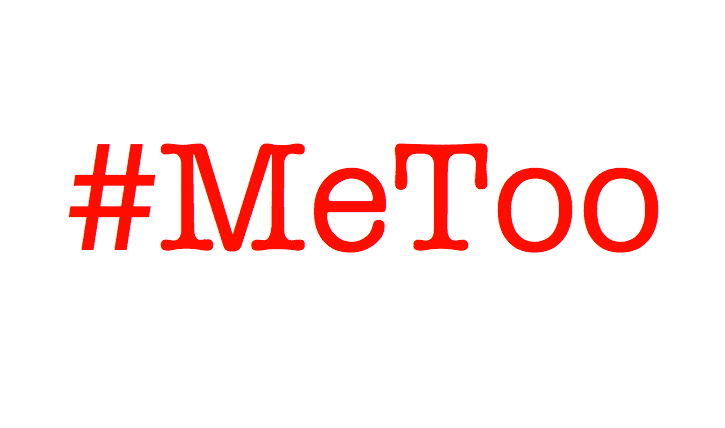

The #MeToo movement has dominated the news headlines and has been one of the most powerful social movements in 2017. And the result has generated a breathtaking human domino effect, as some of the biggest (male) names in business, entertainment, media and politics have been outed for egregious behavior.
But lost in this shuffle has been the impact that sexual harassment has had on countless women who have not had a voice: the hotel maid, the receptionist, the farmworker, the nursing assistant or the retail clerk.
To that end, over 300 women, who are mostly from the worlds of film, television and theater, have launched Time’s Up, an initiative that seeks to address inequality and injustice in the workplace – for all women, not just those with a long filmography or huge Twitter following.
This coalition presents several disturbing facts on what many women experience in their workplace. One in three women have been sexually harassed at work, according to one survey; but 71 percent of those women did not report it. Another survey concluded that half of all women said they have at some point been harassed at work. And this problem is especially pervasive in low-wage service jobs, as over one-quarter of sexual harassment complaints filed with the U.S. Equal Employment Opportunity Commission (EEOC) came from women working within the service sector.
“Too many centers of power – from legislatures to boardrooms to executive suites and management to academia – lack gender parity and women do not have equal decision-making authority,” said Time’s Up founders in a public statement posted on its web site. “This systematic gender-inequality and imbalance of power fosters an environment that is ripe for abuse and harassment against women.”
According to the New York Times, Time’s Up is backed up by what was a $13 million legal defense fund as of New Year’s Day; as of press time, that amount has already increased to $14.2 million. The fund seeks to help working women protect themselves from harassment in the workplace – and not be subjected to retaliation if they report misconduct.
Other goals of Time’s Up are to enact legislation that would penalize companies found tolerating pervasive harassment and to discourage the signing of non-disclosure agreements designed to silence victims of sexual harassment.
Founded by talent agents in October during the firestorm surrounding Harvey Weinstein, Time’s Up also seeks a cultural shift as to how pop culture, and society at large, view women. Organizers are reaching out to women who will walk on the red carpet at Sunday’s Golden Globes awards ceremony and are urging them to wear black as part of a wider anti-harassment protest. And according to the Washington Post, it appears many nominees and ceremony guests will oblige.
Image credit: Leon Kaye